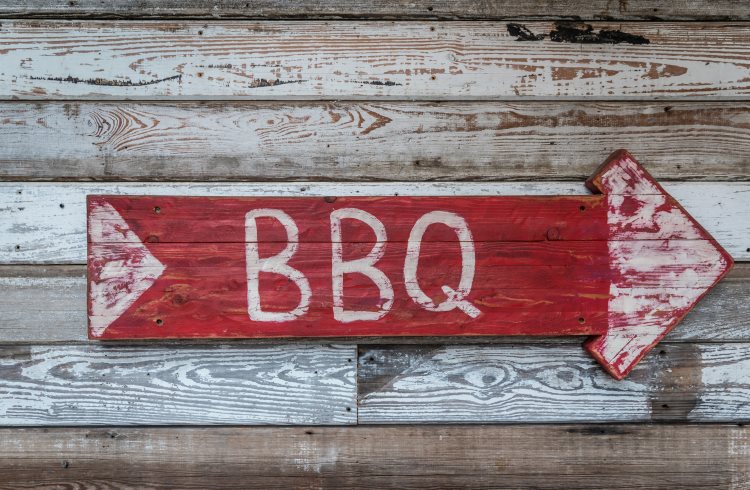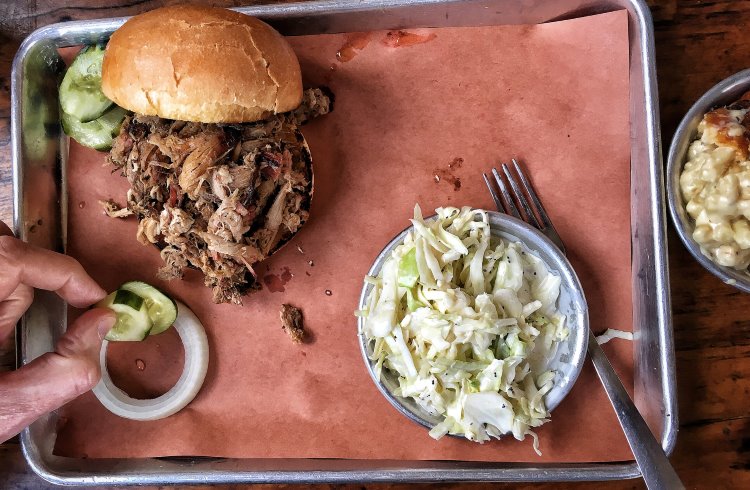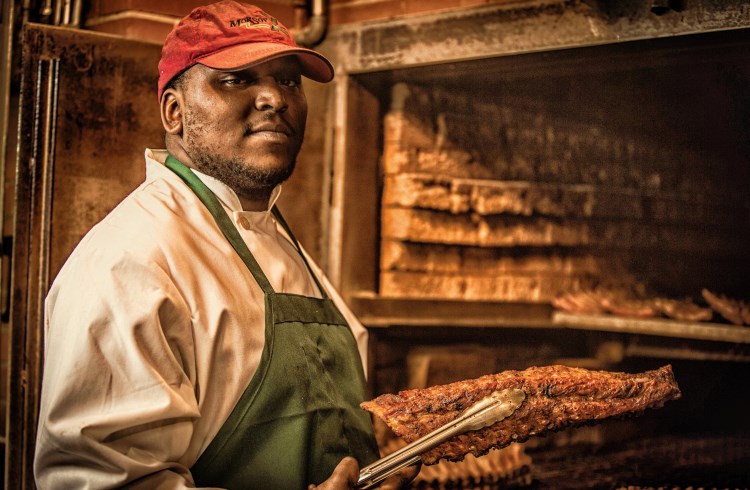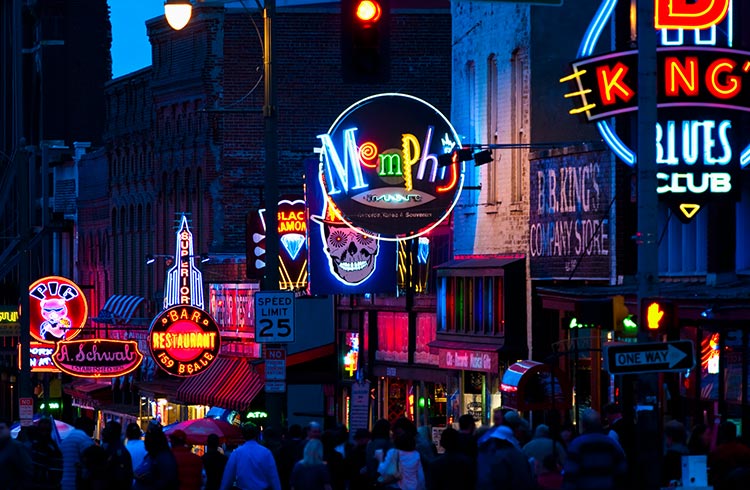A Vegetarian on the Barbecue Trail Across the Southern US
In the American South, barbecue isn’t just a cooking style – it’s a lifestyle. Elle Hardy gets in touch with her inner carnivore as she samples her way from the Carolinas to Texas.
 Photo © Getty Images / Onfokus
Photo © Getty Images / Onfokus
All my life I’ve been a vegetarian – I like to think that I was born this way. But moving to the Deep South, where good company is inseparable from food, had me interrogating my relationship with meat.
Being frequently confined to the kid’s menu when eating out, I started to reconsider my own childhood preferences. They were more instinctive – you might even say picky – and less mindful than I liked to tell myself. Charmed by an episode of Anthony Bourdain: Parts Unknown on barbecue culture, I decided that the scene’s holistic nature and unpretentious settings were my route to exploring whether I could learn to appreciate meat – and embrace a way of life that turned out to be far bigger than just eating.
It was a clash of worlds that brought us what we know today as barbecue. Starting with the indigenous Arawak people of the Caribbean, the colonizing Spaniards translated their practice of slow-cooking meat over coals into barbacoa, before African slaves mastered these techniques and added their own dressings of citrus and hot peppers.
In the United States today there are five main barbecue centers: Texas, Memphis, Kansas City, Alabama, and the Carolinas. I was determined to experience as much of this “barbecue trail” as I could.
BBQ in the Carolinas
In the coastal regions of North and South Carolina, pitmasters go whole hog – literally – slow-cooking the entire pig (whereas Lexington, in western North Carolina, is famed for shoulders, ribs, and a tomato-based sauce).
Using the whole animal seemed to me like the most ethical and sustainable way of consuming meat, and after a small pep talk from the kitchen staff, I was ready to dive in. “It’ll leave y’all moaning, like any good thing that takes all night!” the server said cheerily, presenting me with a plate of their finest cuts of “whole hog barbecue” – I wasn't feeling game enough to ask exactly what that meant – and some sides to take the edge off my first bite of meat since I was a small child.
The smoke drifted through my palate, and the tender meat had a surprising tang, rounded out by a hint of sweetness. A dash of “South Carolina gold” sauce – a mix of vinegar and mustard unique to the state’s barbecue – only enhanced the profile. Learning to chew slowly, I began to appreciate the interplay between layers of flavor, like a good red wine.

Memphis-style BBQ
Though viticulture is renowned for snobbery, it can enter any scene, even the famously laidback world of barbecue. My next stop was Memphis, where I was ringed by locals at a bar just off Beale Street, hotly debating the merits of their favorite joint amongst themselves.
John Vargos, second-generation owner of Rendezvous, which has been ‘cuing since 1948, explained that devotees tend to have a narrow scope, because barbecue is specific restaurants even more so than regions.
Memphis is best known for its dry rubs – local lore says that the smoke is the sauce – and like the Carolinas, hogs are the animals of choice. Vargos leaves the membrane on his ribs because it holds the juices, which isn’t to everyone’s taste, so I applied my tastebuds to the darker meat of the pork shoulder, rubbed in vinegar and a mix of Greek and Cajun spices, and smoked for 12 hours.
While comforted by the familiar tangs of oregano and chilli, I spent most of my meal thinking of how to describe the taste of meat. Like the infamous 1964 Supreme Court case on pornography, when Justice Potter Stewart said it was difficult to define, but “I know it when I see it,” the taste of meat – with layers of savory, sweet, and a dominant smokiness throughout – was something my virgin palate instinctively knew when I tasted it. But what struck me most was the distinct texture, the complex interplay of fat and flesh pros call “mouth feel”.

Alabama-style BBQ
By the time I reached Alabama, my early success stalled. As my mission felt like it had turned to creatively shifting meat around my plate rather than actually eating it, I began discovering the other great thing about barbecue: sauce.
Even the flakiest roadside joint seems to have its own top-secret sauce, although there’s a saying that if you need to add sauce to your barbecue, then they’re doing it wrong; sauce should enhance the flavor, not mask the improper way of cooking it.
Alabama takes its inspiration from all over, but specializes in chicken and white sauce, a blend of mayonnaise and vinegar that is used liberally in the cooking process. The creaminess blended perfectly with the sharp saltiness of chicken, but as I overwhelmed my plate with the house blend, it was apparent that I was doing barbecue wrong.
While I was unexpectedly enjoying the taste of meat, the texture of it was still strange; at times, my throat would involuntarily close over. I fretted about factory farming and the environment, and the traveler’s virtues of staying true to yourself and being open to experimentation dueled nightly in my mind.
Texas-style BBQ
By the time my travels took me to Texas, my gastronomical ego had been cut to the bone. But the idea of a plate of Lone Star steer was made less daunting by the city of Austin itself.
More Coachella than cowboy, its grills are nestled between art galleries and caravans of vintage clothes. Forget pistols at dawn, it’s barbeques shortly after, as diehards from around the world line up for hours at some 20 joints competing for our appetites.
I ordered a morning beer – it is the South, after all – and chewed the fat with my fellow aficionados. In a line that was winding around the street, my fear of gagging on a big hunk of cow in front of all these people began to drift away with the smoke around us. The deliberately informal service, long tables, and celebratory atmosphere made it feel like a backyard family get-together.

Inside, La Barbecue owner LeAnn Mueller helped me overcome some of my ethical concerns. She, too, was once a vegan and vegetarian, and is big on integrity in the supply chain. An early adherent to the growing “happy cows” movement, she says that her suppliers can tell her what next season’s brisket cuts will look like.
Cooking it is something of an artform, and a good pitmaster has an almost harmonious understanding with the animal. “Good brisket should be tender and moist,” she explained. “You want a nice bark around the outside. The fat should be rendered clear and not tough. The point of slow-cooking brisket is that it gets the fat tender so that it renders through the meat and makes it nice and juicy, otherwise it stalls and goes kind of snotty if not cooked correctly.”
As she explained her family’s barbecue roots – grilling the leftover cuts from their grocery store for itinerant workers – I dove into a plate of plain meat, unadulterated by sauces or sides, for the first time in my life. And, for the first time on my odyssey, I made more than a dent in my plate.
While I doubt I’ll ever be a full-fledged carnivore, conquering my fear of meat has made me appreciate that there’s a lot of love – not to mention skill – in barbecue. That I need help in getting through my plate only means I’ll never be short of dinner companions in the South. In my quest to learn how to eat meat, I realized that food is about so much more than what goes in your stomach – it’s really about bringing people together.
Related articles
Simple and flexible travel insurance
You can buy at home or while traveling, and claim online from anywhere in the world. With 150+ adventure activities covered and 24/7 emergency assistance.
Get a quote


No Comments